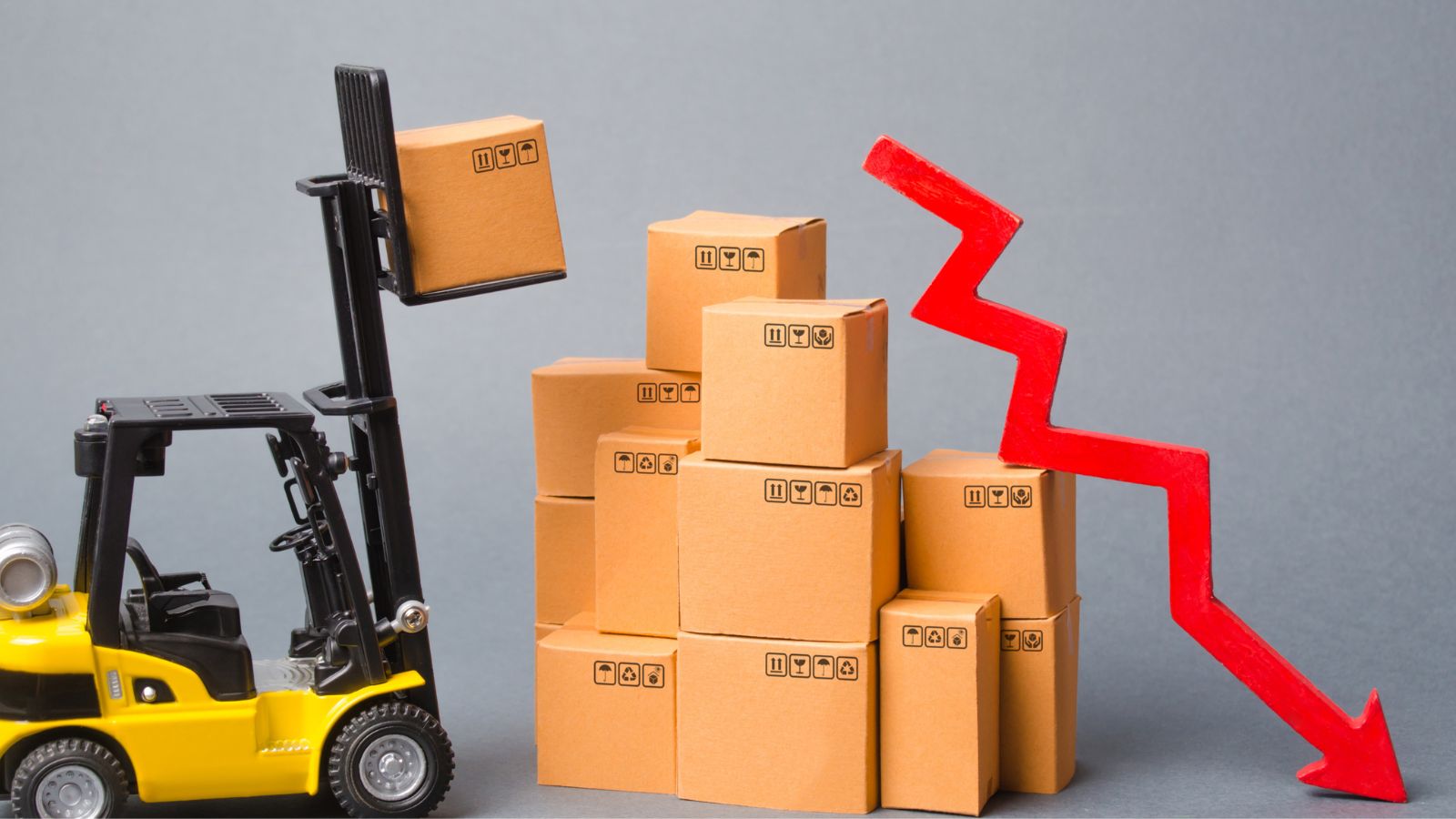Canada’s auto sector has been a major employer and engine of economic expansion for many years. However, trade disagreements and tariffs with the U.S. are causing unexpected disruptions to the business. The future is uncertain due to declining job prospects and rising production prices. Here’s a closer look at how tariffs are changing the auto industry’s future in Canada.
The Cost of New Cars Is Rising

The cost of making cars is rising due to tariffs on steel, aluminum, and auto parts. Even entry-level models are becoming more expensive due to automakers passing these expenses on to customers. Many consumers may no longer be able to purchase an automobile that was reasonably priced a year ago.
New Challenges for the Electric Vehicle Sector

Canada’s goal of becoming a leader in EV manufacturing is becoming increasingly challenging due to tariffs on imported batteries and other minerals. Because of the higher prices, EV infrastructure is not growing as quickly, eco-conscious consumers have fewer options, and the average buyer finds it more challenging to afford electric automobiles.
Increased Demand for Public Transportation

As car ownership costs increase, more Canadians may choose public transportation, placing further strain on already overburdened metropolitan transit systems. Overcrowding, service interruptions, and the requirement for more government financing to expand transit systems could result from cities’ inability to handle the rising ridership. Commuters may experience longer travel times and lower service quality if transportation investment does not meet demand.
Struggling Auto-Related Small Businesses

Due to rising costs, independent repair shops, suppliers of parts, and customized businesses may have to close. Since many small enterprises depend on having inexpensive access to automobiles and components, the additional financial burden caused by tariffs may force them out of business. This can result in a drop in
Used Cars Aren’t a Cheaper Option Anymore

Demand is rising as more consumers turn to the used automobile market as a result of the skyrocketing cost of new cars. Because of this, used car prices have skyrocketed, making them less accessible. A vehicle that used to cost $12,000 may now be priced at $15,000 or more. The supply of quality used cars is also shrinking, making it harder to find a good deal. Even budget-conscious buyers are struggling to get a fair price.
Layoffs in the Auto Industry Are Growing

Automakers are reducing expenses by laying off employees due to decreased demand and increased production costs. More layoffs are anticipated in the upcoming months, adding to the thousands of people who have already lost their employment. The repercussions are being felt by engineers, factory workers, and even dealership employees. Communities that depend on the auto industry for jobs are experiencing unstable finances.
The Cost of Auto Repair Is Exploding

Due to tariffs on many motor parts, repairs are now more costly than they were previously. The increased cost of materials is being passed on to customers by mechanics. Once costing $300, a basic repair could now cost $500 or more. Even routine maintenance, such as oil changes and brake replacements, is becoming pricier.
The Increasing Factory Shutdowns

Several significant manufacturers have already declared plans to close their plants due to tariff-related expenses. General Motors shut down its Oshawa facility, and other businesses are considering doing the same. In addition to assembly workers, these closures impact local companies, suppliers, and transporters.
Canadian-Made Automobiles Are Not as Globally Competitive

Due to tariffs raising production costs, Canadian-made automobiles are becoming less desirable in international markets. Foreign consumers are choosing less expensive options from nations with lower tariffs. Automakers must either absorb expenses or move production elsewhere due to declining exports.
The Hardest Hits Are SUVs and Pickup Trucks

Since larger cars need more raw materials like steel and aluminum, they are particularly susceptible to tariffs. Consequently, the cost of SUVs and trucks has increased more sharply than that of smaller cars. Customers are now reevaluating their options after previously favoring these cars due to their power and usefulness.
The Cost of Electric Vehicles Is Dropping

Costs are rising due to tariffs on vital parts like lithium-ion batteries, even though the government offers subsidies for EVs. Because of this, EVs are less appealing to consumers on a tight budget who may otherwise switch. As a result, the push for greener transportation in Canada could slow down. Automakers may struggle to meet climate targets if EV adoption lags due to high prices.
The Cost of Insurance Is Rising

Insurance firms are increasing premiums to cover potential losses as auto prices and maintenance expenses rise. Your insurance premiums may increase even if you haven’t bought a new vehicle. Insurance has to pay more when accidents happen since replacement parts are expensive. Drivers who already face cost hikes are further burdened financially by higher rates.
Getting Auto Loans Is Getting Harder

Because of the unstable market, banks and lenders are tightening their conditions for auto loans. Banks view financing auto purchases as riskier due to rising vehicle prices. To obtain a loan, many purchasers must now make higher down payments. Higher interest rates also make car financing more expensive in the long run.
The Use of Public Transit Is Growing

As the cost of owning a car rises, more Canadians are using public transportation. As people attempt to reduce the expense of transportation, more people are using buses and trains in cities. Governments may need to increase their investments in public transportation infrastructure if this trend persists. However, some locals are stranded because not all places have dependable transit systems.
Auto Dealerships Are Struggling

Car dealerships depend on consistent sales, but fewer people are purchasing vehicles as costs rise. Revenue is dropping for many dealers, which is causing closures and layoffs. To draw in buyers, those still open are changing their tactics and concentrating more on finance agreements. Certain dealerships offer extended warranties and service packages to make purchases more appealing.
The Decline of Auto Exports

Higher prices brought on by tariffs are causing Canada’s vehicle exports, particularly to the United States, to decline. Countries where production is still less expensive are posing a greater threat to manufacturers. Canadian automakers are under pressure to either absorb the costs or pass them on to customers due to this reduction.
The Cost of Leasing Is Increasing

Leasing businesses are raising their fees to offset rising automobile prices. The rising monthly lease payments make it more difficult for customers to find reasonably priced cars. To further reduce alternatives, several automakers are even lowering lease incentives. The squeeze is being felt by consumers who previously relied on leasing to drive new cars.
Auto Industry Investments Are Declining

Due to tariff uncertainties, investors are reluctant to finance new developments in Canada’s car industry. Some automakers are moving their resources elsewhere, and others are postponing expansions. Less investment results in slower technological improvements and fewer job prospects. If this tendency keeps up, Canada runs the risk of lagging behind in the global auto market.
The Demand for Public Transportation Is Growing

As the cost of owning a personal automobile declines, more people use public transportation. Increased ridership in cities is straining transportation infrastructure. This change may lower emissions, but it also emphasizes how much more money is needed for public transportation. Overcrowding and service interruptions can increase in frequency if nothing is done.
Canadian Manufacturers Are Affected by Export Restrictions

Historically, Canada’s auto industry has depended on exports, but tariffs hamper trade. Internationally dependent automakers are finding it difficult to stay profitable. To prevent financial losses, some businesses are considering moving their production. The worldwide market may see fewer cars built in Canada due to this change.
The Automobile Parts Sector Is Suffering

Tariffs also impact suppliers, not just automakers. The cost of components and raw materials has increased for Canadian car parts manufacturers. Due to a drop in demand, many smaller suppliers are having difficulty surviving. Factory closures and employment losses may rise if the trend persists. The cost of components and raw materials has increased for Canadian car parts manufacturers.
Auto Market Consumer Confidence Is Declining

Due to economic uncertainties, many prospective automobile purchasers are reluctant to make purchases. Concerns include the long-term effects of tariffs, rising interest rates, and job stability. Despite providing incentives and discounts, dealerships are having trouble drawing in customers. A protracted slowdown in the market may occur if confidence doesn’t increase.
Innovation in the Auto Industry Is Declining

In order to pay for tariff-related expenses, automakers are taking funds away from R&D. The development of autonomous and electric vehicle technology is being slowed considerably by this change. Canada’s competitive advantage in automobile innovation could be lost. Companies may find it difficult to compete on a global scale if they are unable to make investments in the future. The industry may regress for years to come as a r
Exports of Second-hand Automobiles are Rising

Canadian auto dealers are looking for new markets for old cars as domestic auto sales are suffering. Many are shipping used automobiles to nations in greater demand. In Canada, this trend is driving up the cost of used cars even more. Although it keeps dealerships afloat, it makes it more difficult for local buyers to find affordable options.
Environmental Laws Are Getting Harder to Implement

Due to rising production costs, automakers are being forced to put short-term survival ahead of long-term sustainability. To save money, some businesses are postponing investments in environmentally friendly technology. This might impede Canada’s efforts to cut automobile emissions. Without more stringent regulation, economic considerations might override environmental objectives.
The Renegotiating of Trade Agreements

Canada is advocating for new trade agreements due to the enormous disruption caused by tariffs. There are still talks with important auto markets, including the United States and Mexico. The way these talks turn out may have an impact on the industry’s future. Others worry that negative words could worsen matters, while others hope for relief. Automakers are being held back by trade policy uncertainty.
It’s Getting Harder to Enforce Environmental Regulations

Automakers are being forced by rising production costs to put short-term survival ahead of long-term sustainability. Some businesses are postponing investments in environmentally friendly technology to save money. This may slow Canada’s efforts to lower car emissions. Environmental objectives may be subordinated to economic considerations without more stringent regulation.
Renegotiating Trade Agreements

Canada is advocating for new trade deals since tariffs are causing extensive disruption. The U.S. and Mexico, two significant auto markets, are still negotiating. The outcome of these talks may impact the industry’s future. Some people want relief, while others worry that negative phrases worsen matters.
It’s hard for Smaller Automakers to Compete.

Smaller businesses are having difficulty, while larger firms can afford to bear the price of tariffs. It is becoming more difficult for startups and specialty automakers to remain in business. Many are reducing production or ceasing operations completely due to a lack of funding. As a result, consumers have fewer options as market competition declines.
Auto-Related Businesses Are Feeling the Impact

Beyond car manufacturers and dealerships, other firms related to the auto industry are hurting. Revenue is declining for mechanics, auto rental companies, and parts merchants. Many are being compelled to reduce their workforces or hike costs. Tariffs have an economic impact that goes well beyond the sale of automobiles.
Conclusion

The auto industry in Canada is at a turning point in its history. Tariffs force businesses and consumers to make difficult decisions by increasing costs, decreasing exports, and endangering jobs. Whether or not there is relief, one thing is for sure: the Canadian auto industry will have a rough time.
25 Countries Predicted to Become Economic Superpowers in the Next 20 Years

The strength of an economy plays a crucial role in various international policies about trade and relations. Certain factors determine the strength of an economy, including population growth, availability of resources, and development and advancement. Here are 25 countries predicted to become economic superpowers in the next 20 years
25 Countries Predicted to Become Economic Superpowers in the Next 20 Years
